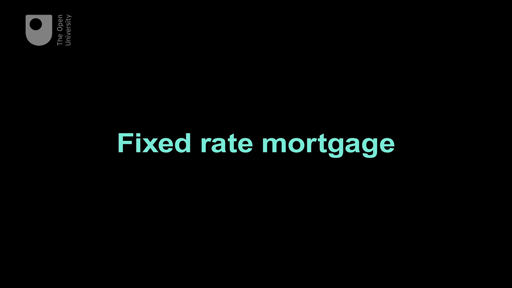3 Getting the funds together
The first step to buying your own home is determining how much you can afford to pay for a property.
For most people – certainly when buying their first property – the key element is how much you can afford to borrow in the form of a mortgage.

Transcript
There are many different types of mortgage product. In the video financial services expert Jonquil Lowe guides you around the mortgage market.
Mortgages are simply loans used to buy property or land. Typically the term of a mortgage is 25 years – although they can be for longer or much shorter terms.
For most mortgage lenders the maximum they will be prepared to advance you is 95% of their valuation of the property you’re buying. This means that you will have to cover at least 5% of the property cost – through money you’ve saved or perhaps via a donation from your family.
Setting up a Lifetime ISA will help you save up for a deposit for your first home. These ISAs, launched in 2017, allow tax-free savings of up to £4000 per annum with the government topping up balances by £1 for every £4 saved. Lifetime ISAs, which can be built up until the age of 50 years, are intended to help people save for a first property purchase.
You should certainly try to get together as large a deposit as possible. One of the key factors in the amount of interest you pay on your mortgage is the amount of deposit you put down in relation to the value of the property. To put it another way, the lower the size of the mortgage that you need in relation to the value of the property, the lower the interest rate on the mortgage you’re likely to have to pay. This is because the lower the ‘loan-to-value’ the lower the risk of lending to you is from the perspective of the lender.
There is one over-arching control, though, on the size of the mortgage. This is the ‘affordability test’. When you apply for a mortgage the lender will conduct a detailed exercise to establish how much you can realistically afford to borrow. They’ll work through the following stages.
- Analysing your income and spending for at least the previous 3 months before you apply, to ascertain your budgetary position.
- Ascertaining whether you’re in permanent or temporary employment. Not having permanent job is a negative factor in affordability tests as lenders will be concerned about the potential drop in household income once the temporary job ends.
- Detailing all your financial commitments. This will include existing debt repayments that you have to make and might also cover education costs for children (nursery and school fees), transport costs (car lease payments) and, perhaps, the cost of gym membership.
- Stress testing your budget to see if you could still afford to repay your mortgage if the mortgage rate rises sharply (typically by 3%).
One thing to remember is that if you cover part of the property purchase cost through another loan (even a loan from your parents) the costs of the loan will be included in the affordability calculations and will therefore reduce the size of the mortgage offered to you. This is why if your family is supporting you when you buy your home they will need to complete a ‘gift agreement’ that states that the money given to you is a gift (it does not have to be repaid) as opposed to a loan (it does have to be repaid).
Affordability tests vary from one lender to another and some are more generous than others. However current evidence indicates that if you have an income of £30,000 per year then – at the interest rate levels seen in recent years – the mortgage you’re likely to be offered will be between £85,000 and £125,000. You can scale this range up and down based on how your income compares with £30,000 per year. Clearly if your outcome is towards the bottom end of the range you should really try an alternative mortgage lender or get a mortgage broker to seek out the best deal for you. Brokers will normally charge a fee and might also receive commission from the mortgage provider.
Activity 2 Before the affordability test
If you’re planning to buy a property in a few months’ time what should you do ahead of the affordability test to improve your chances of the lender approving the mortgage you need?
Feedback
First check your current credit ratings and credit files to ensure that both are satisfactory. The mortgage lender will do this when you apply.
Then take action to improve your financial profile, focusing on the cash flows that go through your bank account.
- Pay off existing debts, including credit card debts, if possible.
- Do not take on any more debts (such as a car loan).
- Avoid non-essential spending in the 3 months ahead of your mortgage interview.
- Perhaps even cancel – albeit temporarily – activities that have a monthly cost (such as gym membership).
If you’re in a temporary job contract try to get this made permanent ahead of applying for a mortgage.
Make sure you have evidence of the deposit you will contribute to the property purchase.
